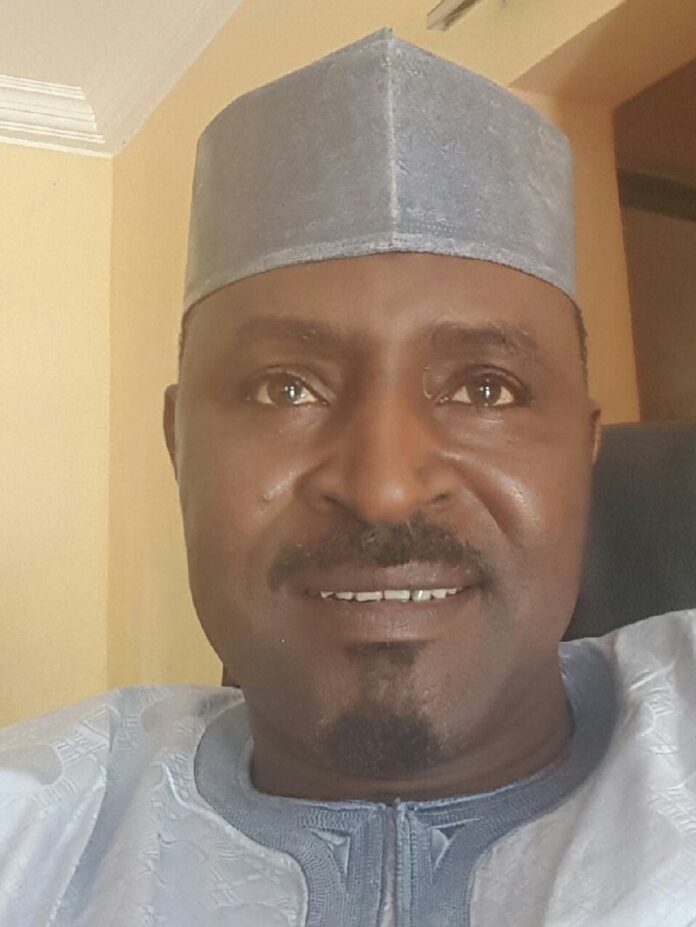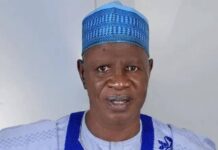Sasakawa Africa Association: Three decades of hunger eradication in Nigeria (II), by Prof. MK Othman
Deep Thought with Othman
One of the questions posed last week was on the historical perspective of SAA-Nigeria. Originally, Nigeria was not a target of SAA as the country was not qualified because of its potential greatness.
However, the then retired General and former Head of State, Olusegun Obasanjo was in the Board of SAA and thus, convinced his colleagues in the Board to come to Nigeria after the closure of Sudan’s office. That marked the birth of SAA-Nigeria in 1992. Since then, SAA-Nigeria has been painstakingly and meticulously built over the last three decades.
READ ALSO: Sasakawa Africa Association: Three decades of hunger eradication in Nigeria, by Prof. MK Othman
Dr Jose Valencia, a Mexican crop breeder was the first Country Director of SAA-Nigeria. He came to Nigeria at the time of the political imbroglio of the early 1990s. He spent months in Abuja trying to sort out the administrative and diplomatic framework with Federal Government at the centre and find a receptive environment to work with farmers and researchers.
After a year of backs and forth, he settled to work with ABU Zaria, wheat and maize farmers in Kano and Kaduna states, respectively. In Zaria, Valencia found a close ally in Dr Ahmed Falaki who brought his disciples for aggressive wheat and maize technologies transfer with SAA popular slogan “take it to the farmer”.
Then, some of the Falaki’s disciples and foot soldiers were Dr Sani Miko, Dr I. U. Abubakar, Sani Sagagi among others in ABU Zaria, KNARDA Kano, and KADP Kaduna. Within a few years of the debut of SAA-Nigeria, the results were astonishingly amazing as maize farmers in Saminaka, Kaduna state recorded a yield increase of 8 tons per hectare (using SAA model) from less than 2 tons per hectare (using tradition method). Similar results for wheat in Kadawa, Kano state were reported.
Using the SAA model made wheat farmers realize a yield of six tons per hectare compared with 1.5 tons per hectare using the traditional method. Valencia handed over the leadership of SAA-Nigeria to Dr Falaki in 1997 as the National Coordinator. Falaki was a simple, humble, and down-to-earth man with chains of adherents across the nation and the acute passion to support smallholder farmers for increased productivity. Then, the SAA-Nigeria under the leadership of Falaki was principally in nine states; Adamawa, Anambra, Benue, Cross-River, Gombe, Jigawa, Kano, Katsina, and Ogun.
In these states, over 26,000 farmers, 3,800 extension agents, and lead farmers were the direct beneficiaries of SAA-Nigeria. Falaki handed over the affairs of SAA-Nigeria to his principal disciple, Prof. SaniMiko in 2009 as the Country Director. Miko was the first Nigerian to be appointed in such an enviable position after his years of diligent and loyal service under his teacher and mentor, Dr Falaki. Unfortunately, in 2015, Dr Ahmed Falaki was gruesomely murdered in cold blood by yet-to-be-found assailants, my tribute to the Farmers General, Dr Ahmed Falaki can be accessed via my blog. (https://breakthroughwithmkothman.blogspot.com/2018/12/professor-ahmad-mustafa-falaki-fall-of.html)
Currently, members of SAA-Nigeria behind the titanic success in Nigeria are Nigerians working in Nigeria. They make the most cherished and ideal dream of Nigeria’s unity in diversity. These are people from different corners of Nigeria, harmoniously and dedicatedly working together for a common purpose. Differences in religion, ethnicity, and region have no place in the working of SAA-Nigeria.
The entire workforce of SAA-Nigeria has less than 50 personnel comprising scientists, technicians, chauffeurs, staff of admins and finance as well as other support staff. Scientists and technical staff constitute less than 50% of the workforce but they are mainly responsible for the accomplishment of the SAA mandates in Nigeria. So far, SAA-Nigeria has built the capacity of over 8 million smallholder farmers and over 20 million value chain actors of maize, soybean, rice, wheat, tomato, sorghum, and millet, directly and indirectly. The productivities of the beneficiaries have significantly increased from mere percentages to multiples of a number depending on the extraneous factors. Suffice to say, the beneficiaries are not only content but also moving out of the poverty circle. One wonders how these few Nigerians; the personnel of SAA-Nigeria are making tremendous impacts on Agriculture in the 18 states where the program is being operated. How? There are two major reasons.
First, SAA staff recruitment is driven by merit. Mediocrity and nepotism have no place in the SAA recruitment exercise. As a friend and admirer of SAA-Nigeria, I once observed a recruitment procedure to fill a vacant post. Highly qualified applicants with top-class degrees (first and second-upper-class degrees) in the relevant disciplines were shortlisted. The applicants were all subjected to the same interview session. One of the applicants was assumed to have an advantage over others because his brother was a friend to the Chairman of the interview panel.
He scored overall third position and lost the job to the unknown applicant who scored the first position. Merit is the thoroughgoing and flat-out condition for staff recruitment in SAA-Nigeria. This is because SAA-Nigeria executes projects with excellent results at least cost, contrary to the Nigerian public system where projects are executed with poor results at outrageous costs. It is very common at SAA-Nigeria, after project completion, 30-50% cost savings are made, which is used for another project.
Second, SAA-Nigeria can work through the existing government structure for agricultural development. SAA-Nigeria works with active collaboration and partnership with the staff of the State Ministry of Agriculture and Agricultural Development Program. This has the double-edge advantage of building the capacity of the state manpower as well as benefiting farmers directly.
In conclusion, Prof. Sani Miko, the current CD had an effective tutelage from the duo of Valencia-Falaki solid and unshakable foundation of SAA-Nigeria. He has since meticulously expanded the scope both methodologically and in areas of coverage. In addition to the usual financial support of Sasakawa Nippon Foundation, the main financier of SAA to build the capacity and increase the productivity of 100,000 farmers, he successfully secured other financial sources.
Today, SAA is working in 18 states across all the regions of Nigeria with a cumulative 8 million farmers as direct beneficiaries of SAA-Nigeria. The number of indirect beneficiaries is more than four times the number of farmers. Despite this huge success, hunger is still threatening millions of Nigerians. The best way for Nigeria to ensure food security is to adopt the concept of SAA-Nigeria. Fortunately, the doors of SAA-Nigeria are widely open and readily receptive, and willing to support Nigeria to attain food security, reduce poverty, and social crimes in the society. The ball is in Nigeria’s court.
Prof Othman writes from NAERLS, ABU Zaria and can be reached via email: mkothman@gmail.com.
Follow the Neptune Prime channel on WhatsApp:
Do you have breaking news, interview request, opinion, suggestion, or want your event covered? Email us at neptuneprime2233@gmail.com





